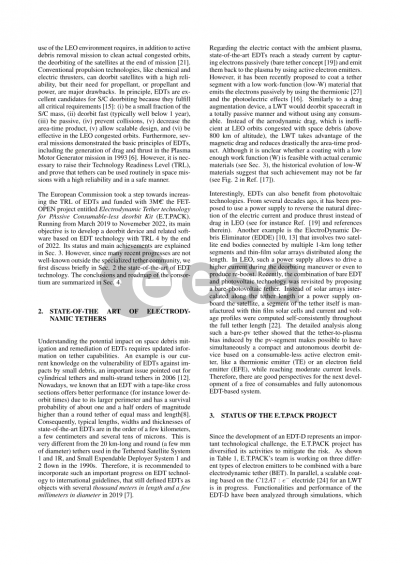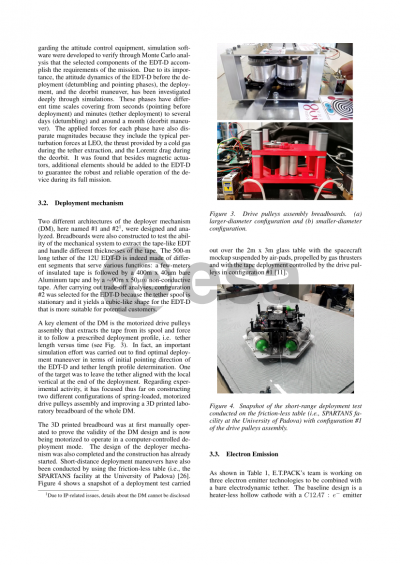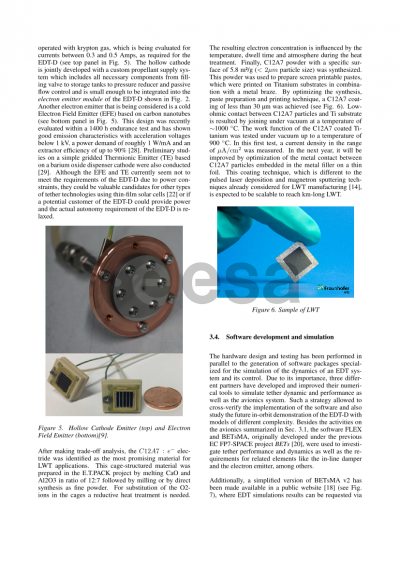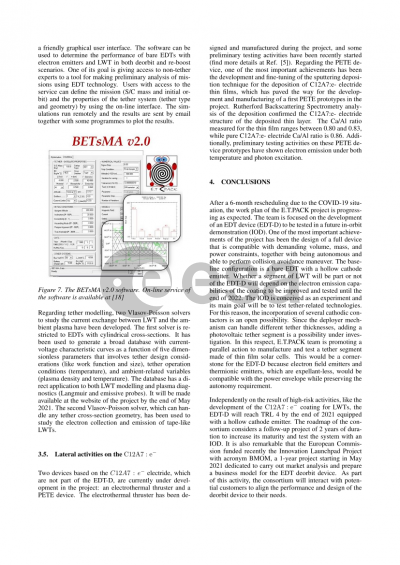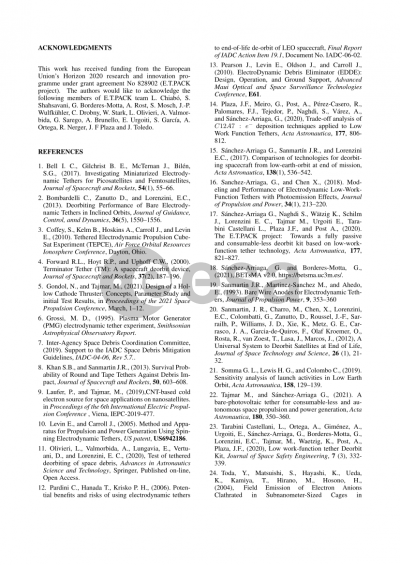Document details

Abstract
The Electrodynamic Tether technology for PAssive Consumable-less deorbit Kit (E.T.PACK) is a FET-OPEN project funded with 3M€ by the European Commission. Started in March 2019, its main goal is reaching a technology readiness level equal to 4 for a deorbit device based on ElectroDynamic Tether (EDT) technology by the end of 2022. Consortium’s roadmap considers a follow-up 2-year project to increase the maturity of the device and make a demo flight by 2024 of an EDT-based deorbit device Demonstrator (EDT-D), which may be the precursor of a full-scale commercial device to be bolted on customer satellite before launch for deorbiting at the end of life. Consequently, E.T.PACK’s consortium has recently finished the design phase of the EDT-D. It has been prepared for a demo flight from an initial orbital altitude of about 600km and mid inclination, where the natural deorbit time is around 10 - 15 years. The main goals of the mission are testing critical EDT technologies and to use the EDT-D for reducing the deorbit time two order of magnitudes, thus re-entering in less than 4 months.
The EDT-D consists of two different modules that fit a standard 12U CubeSat envelope for a total mass of 24 kg. The two modules are designed to deploy along the local vertical and operate a tape-like EDT of dimensions 40 microns x 2.5 cm x 500 m. The longitudinal structure of the tether includes a bare segment for passive electron collection (400 m), and inert segment for stabilization purposes (around 90 m), and a few meters long conductive segment coated with a low work function (W) material for electron emission. Each module is completely independent, and have their own power, communication, data handling and cold gas-based attitude control subsystems. One module is responsible for tether deployment while the other contains two types of electron emitters: a heaterless hollow cathode and small chips of electron field emitters. Therefore, the experiment will test three technologies for electron emission: the passive low-W tether and two active emitters. The union between the modules during launch and early orbital operations is guaranteed by a means of a commercial Hold Down and Release Mechanism. Upon activation, the two modules separate and align the tether along nadir direction with the help of a cold gas and the gravity gradient. A telecommand from ground to the electron emitter starts the deorbiting maneuver.
This work presents the status of the scientific and technological activities of E.T.PACK. They involve new capabilities for the EDT mission analysis software BETsMA v2.0 and FLEX, and design, manufacturing and testing of the EDT-D. The latter includes the deployment mechanism, a coating process for the low-W tether, two types of electron emitters, and the avionics and attitude control subsystems of the EDT-D. Two lateral activities part of E.T.PACK but not needed for the EDT-D (a hollow cathode thruster and a photon-enhanced thermionic emission device) and an unexpected result of the project (a bare-photovoltaic tether) are discussed briefly.
Preview

